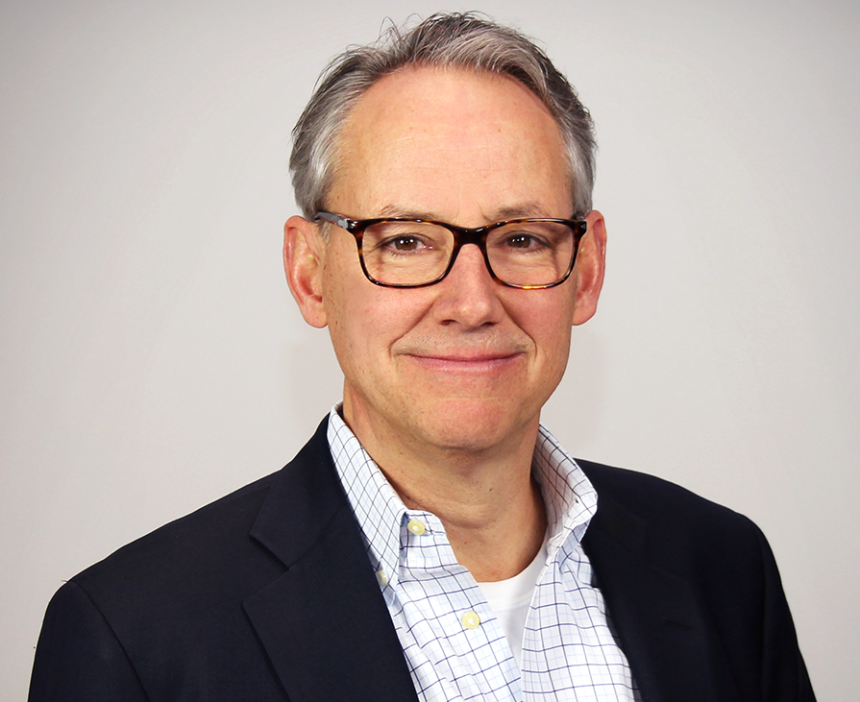Every few months, when health media pundits issue one of their “print is dead” declarations, the channel’s boosters respond the way they always have. They sigh, acknowledge the continued rise of digital, and point to recent data showing the channel holding its own in many places and thriving in others.
If they ever want to weaponize their counterarguments, they should simply direct critics to lifelong pharma print exec John Kenyon, who oversees point-of-care print at Meredith and serves as publisher of POC-exclusive titles Time Health (Meredith continues to handle sales-related activities for Time Health after selling Time to Salesforce magnate Marc Benioff and his wife Lynne last September), People Health, and Health Reports.
Kenyon is vocal in his belief that the broader health-media community needs to push back against the “profound negativity” about print and DTC — which, he adds almost casually, “nauseates” him.
“We have to be more defensive about arming ourselves so that everybody knows the continued power of print. The industry has to rally,” Kenyon says. While he prefaces the comment by noting he “doesn’t want to get into politics,” he believes Americans “are fortunate to have the freedoms DTC affords us. There’s an unprecedented ability to be fully informed and ask informed questions of doctors. People in other countries don’t have that.”
Kenyon is also a believer in the power of print, but he’s no blind zealot. He refers often to Catalina studies that affirm the staying power of the genre — and, not coincidentally, Meredith’s dominant position in the consumer realm. Meredith reports over 265 million followers on social, 120 million print readers, and a paid circulation of 45 million readers.
Mostly he wonders if the marketing momentum toward all things digital has left the print and POC channels underutilized. “Imagine a niche drug with a total potential patient population of 500,000 that’s not doing any POC. How can a brand such as that ignore it, when there are only 2,000 doctors who write scripts for that drug?” Kenyon asks, noting he encountered that situation a few weeks earlier.
We have to be more defensive about arming ourselves so that everybody knows the continued power of print
John Kenyon, Time/Meredith
“They’re running mostly on TV — like, Wheel of Fortune — and doing a little social. It drives me crazy that TV gets that. With POC, you can go live in those 2,000 offices for three months for $100,000.”
Kenyon’s vigorous advocacy distinguishes him from other channel apostles and has given rise to an unusual degree of devotion from his professional peers. David Matt, VP, creative and content at Meredith’s content marketing agency, The Foundry, admiringly calls him “always-on John” and says, “You want a guy like him on your team, someone who can split the arrow faster than the rest.”
Time editor-in-chief and CEO Edward Felsenthal, with whom Kenyon worked closely on the Time Health launch, adds that Kenyon’s enthusiasm is couched in deep knowledge of the space and a keen eye for media trends.
That sense led Kenyon to write the initial business plan for Time Health in 2005 and, in his words, “not let it go” until its late-2017 debut.


“John was one of the first to recognize there is a crisis of trust in targeted health media,” Felsenthal says.
The three Meredith POC publications align with that thinking. Each issue focuses on a specific condition — recent cover topics have included COPD and asthma — and is delivered exclusively to physician offices that treat the condition on a frequent basis.
As for the POC space itself, Meredith suffered collateral damage when Outcome Health’s fraud was exposed in late 2017: Pfizer, one of the publisher’s largest clients, pulled out of the space altogether.
At the same time, Kenyon acknowledges the subsequent move toward more buttoned-up verification processes was long overdue. “We’re going to look back on that chapter and think, ‘Dammit, that’s a good thing that happened.’”
To that end, expect his team and Meredith’s POC unit to expand their mission in the months ahead. The Better Homes and Gardens brand would likely lead any such charge.
“What we’d do with [clients such as] Geico is different from what we’d do with Novartis,” Kenyon says. “For instance, these science-oriented firms might not be sure how to talk to new mothers. Nobody talks to new mothers like Meredith.”
From the April 01, 2019 Issue of MM+M - Medical Marketing and Media







